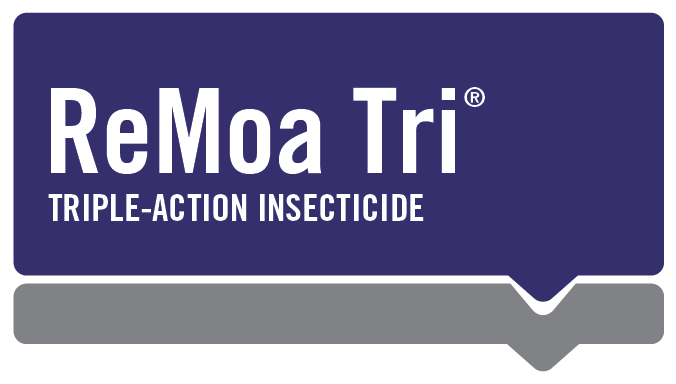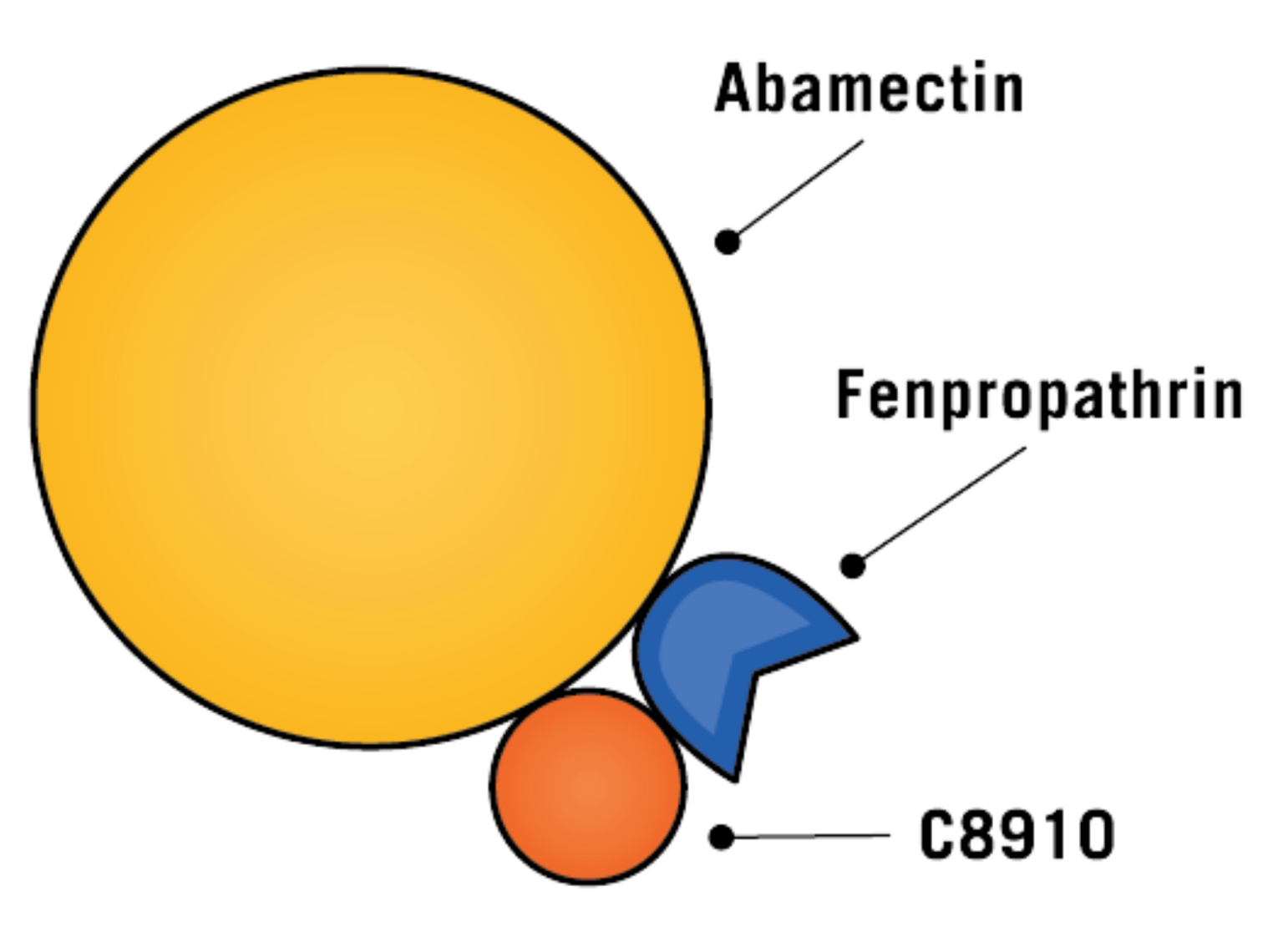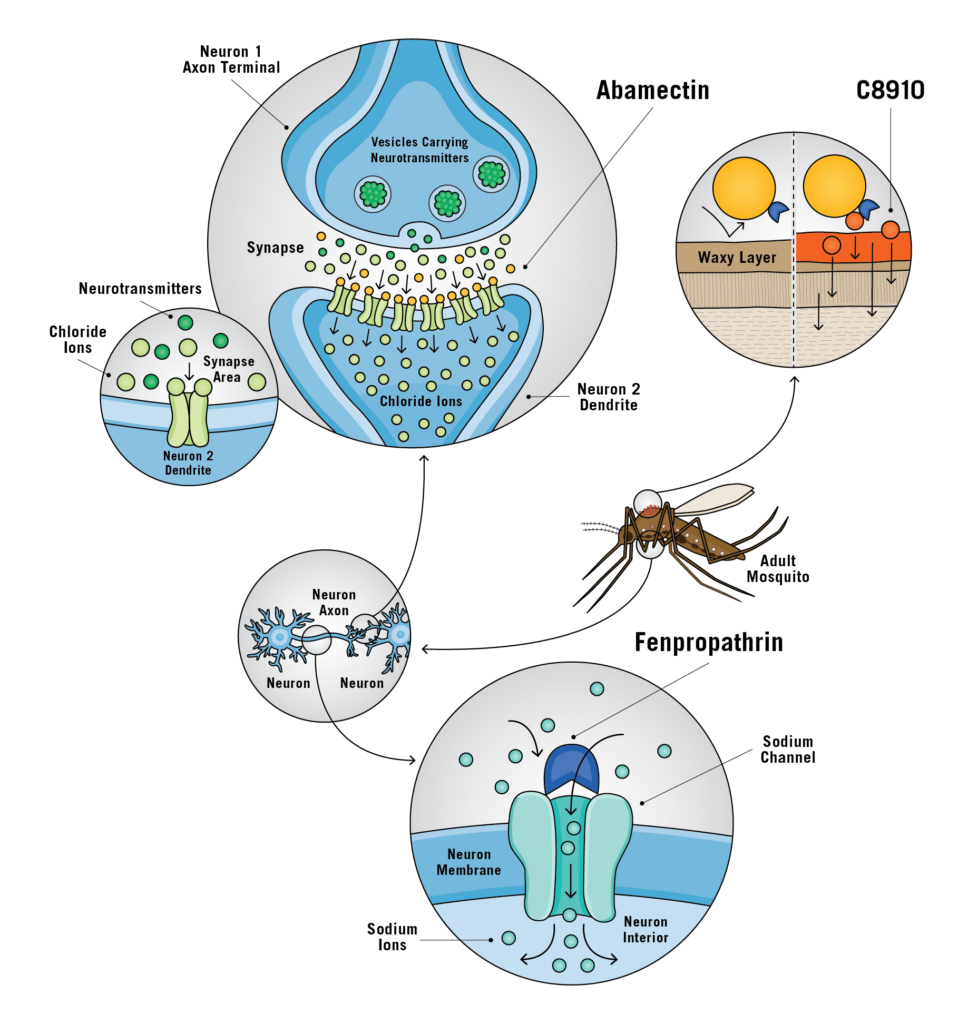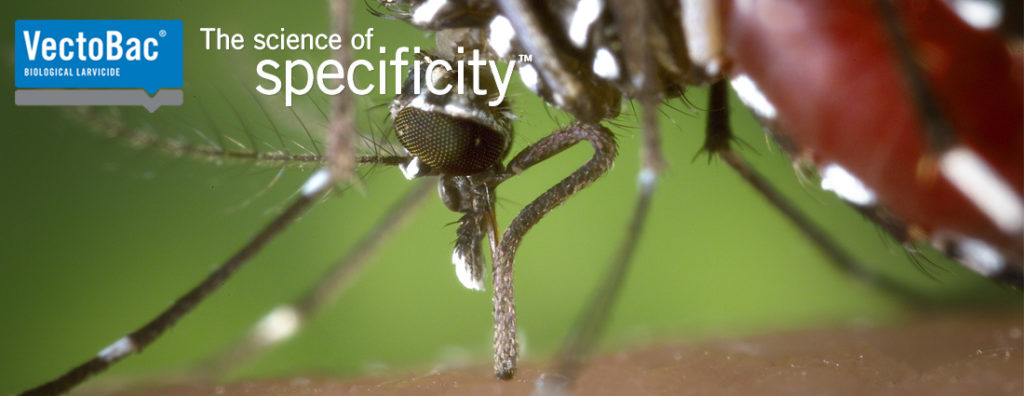Products
Quick Links
ReMoa Tri Frequently Asked Questions
Contact a Valent BioSciences public health representative.
Contact Us
ReMoa Tri, the world’s first mosquito space spray based on a bacterium, is a novel combination of three active ingredients (abamectin, fenpropathrin, C8910 fatty acid blend) with three different modes of action for complete mosquito resistance management.

ReMoa Tri’s patented biorational technology assures consistent application and efficacy against both metabolic resistance and knockdown resistance (kdr).
| FEATURES | BENEFITS |
| World’s first mosquito adulticide space spray based on a soil bacterium | Resistance management Sustainability |
| Contains soil bacterium metabolite that has historically been used in pharmaceuticals (discoverers awarded Nobel Prize) | Reduced risk |
| Combination of three active ingredients (abamectin, fenpropathrin, C8910) novel to mosquito control with three different modes of action | Broad spectrum efficacy to manage both metabolic and kdr resistance No PBO required |
| Ready-to-use formulation | Operational speed |
| High efficacy of an organophosphate with the safety profile of a pyrethroid | Saves time on training staff to manage multiple active ingredient types (e.g. PPE, pre-cautions, etc.) |
| Only space spray in market that lists resistant mosquito control on the label | Peace of mind |
| Multiple application platforms and uses (vehicle-mounted, handheld, and non-crop aerial)* | Operational flexibility |
| Non-corrosive formulation | No need to replace expensive valves and fixtures in equipment |
| Oil-based space spray | Works well with existing ULV equiment in the field |
* For crop use, U.S. Environmental Protection Agency is still reviewing these applications
ReMoa Tri's Unique Formulation
ReMoa Tri is a matrix of three different active ingredients: abamectin, fenpropathrin, and C8910.
Abamectin
Avermectins are used as both pharmaceuticals and pesticides and belong to the group of compounds referred to as macrocyclic lactones. They are fermented from the naturally occurring soil bacterium Streptomyces avermitilis. Discovery of avermectin was awarded a Nobel prize in 2015 in recognition of its positive impacts on human and veterinary health. Abamectin is another naturally
occurring avermectin compound that is fermented from the same soil bacterium as ivermectin.
Fenpropathrin
There are two types of synthetic pyrethroids that are used as insecticides referred to as ‘Type 1’ and ‘Type 2’. Permethrin, d-phenothrin (commercially referred to as ‘Sumithrin’), etc. belong to the Type 1 pyrethroid class while pyrethroids such as deltamethrin belong to the Type 2 pyrethroid class. Fenpropathrin belongs to the Type 2 group of pyrethroids. Type 2 pyrethroids have shown to be more efficient in interfering with voltage-gated sodium channels.

The molecular weight of abamectin is 1732.1 g/mol which is 3-4 times larger compared to several other pyrethroids like permethrin (391.28 g/mol) and deltamethrin (505.21 g/mol), or organophosphates like Naled (380.784 g/mol) and malathion (330.358 g/mol). Hence, a unique formulation is key in achieving absorption of abamectin and other active ingredients in a matrix through the cuticle of mosquitoes.
C8910
Some fatty acids found naturally on human skin have been shown to have insect repellent properties. Fatty acids are long carbon chain molecules; often abbreviations are used to designate fatty acid length (e.g., an eight-carbon long fatty acid is short-handed to “C8”). It was discovered that a specific combination of octanoic (C8), nonanoic (C9), and decanoic (C10) fatty acids (collectively called C8910) had a synergistic effect in regard to repellency when compared to each of these fatty acids alone. This unique combination of C8910 was patented in 2001. This patented fatty acid combination has a repellent effect at lower doses and an insecticidal effect at higher doses. When combined with pyrethroids, C8910 enhances efficacy by delivering a synergistic effect. Although the original source of discovery was from the observation of differences between human fatty acid emissions, commercial sources have been historically used to manufacture these fatty acids. For example, C8 and C10 are made from palm oil and coconut oil respectively, whereas C9 can be made from tallow
ReMoa Tri's Modes of Action

Abamectin
This naturally occurring compound produced by fermentation of a soil bacterium, interferes with the glutamate-gated chloride channels (GluCls) (see note) found only in the invertebrate neuromuscular system. Binding to these channels causes irreversible conductance, hyperpolarization, and paralysis. GluCls are not found in mammals, and moreover, the semi-permeable membrane in mammals that prevents particles from the blood entering the central nervous system (also known as the blood brain barrier) prevents these compounds from entering the brain there by giving them a wider margin of safety.
Fenpropathrin
Pyrethroids, like pyrethrins, affect the voltage-gated sodium channels by binding to specific receptors and creating persistently open channels which results in muscular paralysis and death of insects.C8910
The exact mode of action for the blend of fatty acids known as C8, C9 and C10 has not
been fully expounded, however, fatty acids are thought to have similar effects to that of
organic insecticidal soaps by which they either asphyxiate the respiratory system and/or
break down the cuticle protection of pest insects. This theory is strengthened by evidence
of fatty acids synergizing common pesticides such as pyrethroids (U.S. Patent 2014,
US9826742B2). It has been documented that the incapacitating and toxic effects of fatty
acids on mosquitoes are highly dependent on the type of fatty acids and the formulation being
used. Higher level vapor exposure or physical contact with C8910 causes a sensory overload to
exposed insects, resulting in an ‘agitated state’ (U.S. Patent 2009/WO 2010121142A2).
Resources
Learn more about ReMoa Tri







